
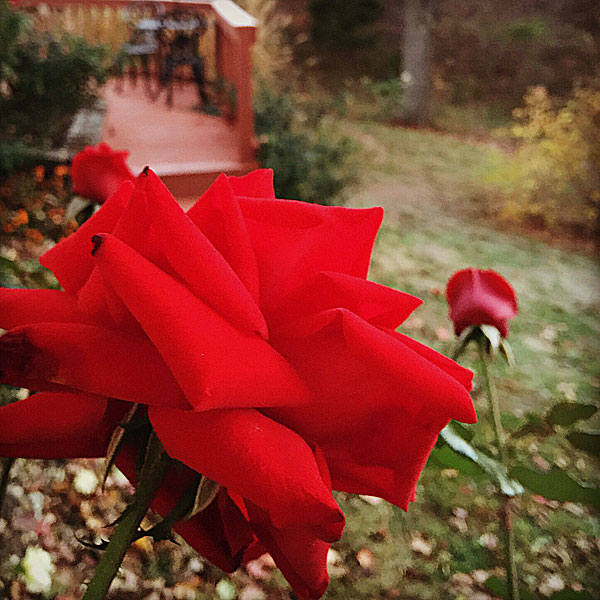
Light dances with nature creating a symphony each second, every snapshot a mystery. A myriad of colors, reflections and pools of light bounce along twinkling as if the very eye of creation winks and says “Catch me if you can, for I’ll be gone forevermore into the space of eternity like the sands in the hourglass of time.â€
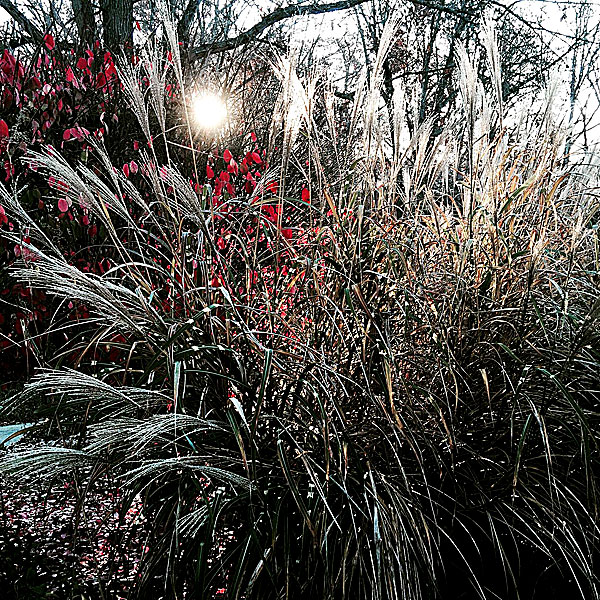
This Thanksgiving I want to share how thankful I am for Illinois fall colors. This autumn is the most beautiful I can ever remember in Illinois. Most folks probably would not think of Illinois when they think of fall colors, however Central Illinois with its rolling hills, bountiful corn fields and soybeans that my Mother and Dad often said “feeds the world” is awesomely beautiful.

The roses intensified in colors and played off the sunlight and fall color of the leaves all season long. Here are the factors at play:
- Changes in temperature;
- Hours of daylight;
- Wonders of nature (who knows how many variables!)
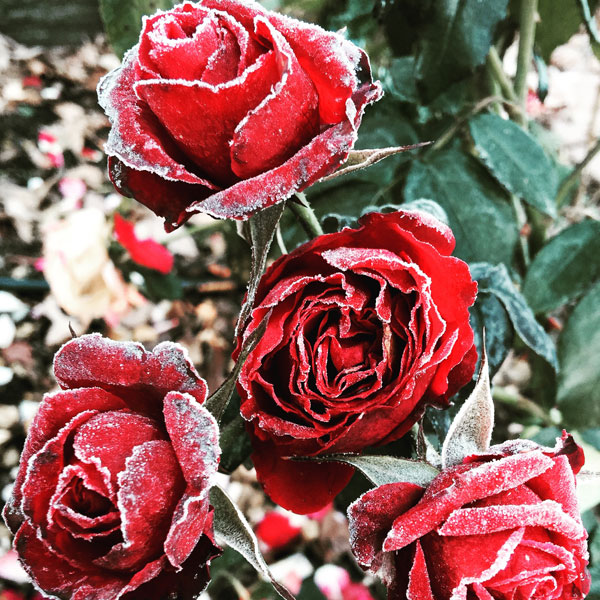
The following factors all play a role in having a powerful affect in making each autumn and rose unique. So let’s look at how the three basic pigment groups: carotenoids and two types of flavonoids – anthocyanin and flavonols affect flower color:

Carotenoids Hold Color
During the hottest summer days the bright yellow and orange flowers tend to hold their color because the carotenoids are the most stable of the flower and fruit pigments.
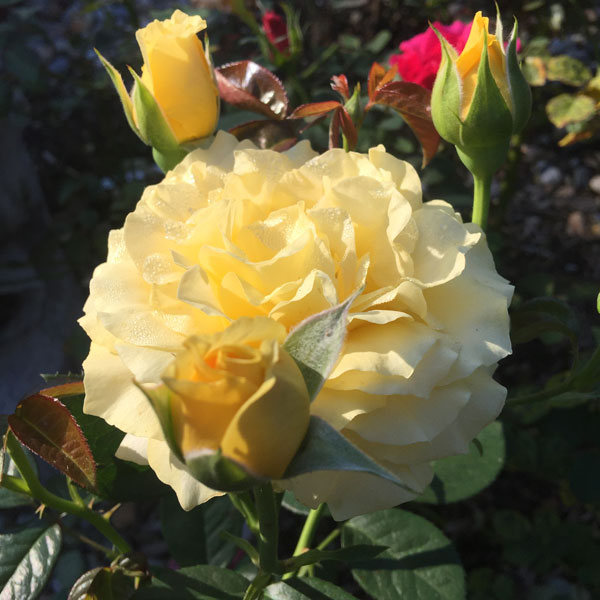
They are enclosed in their own little compartments, called “plastids,” nestled inside the cytoplasm of individual plant cells, out of reach of many of the substances that a plant absorbs. Pesticides don’t reach them, nor do most of the nutrients and toxins plants absorb from the soil or air. When damaging substances do manage to get to them, these carotenoids have a second line of defense in their anti-oxidant actions that protect the plant even further. So the carotenoid pigments last and last. Whatever color the flower opens with, it maintains that color until well after it folds back up.
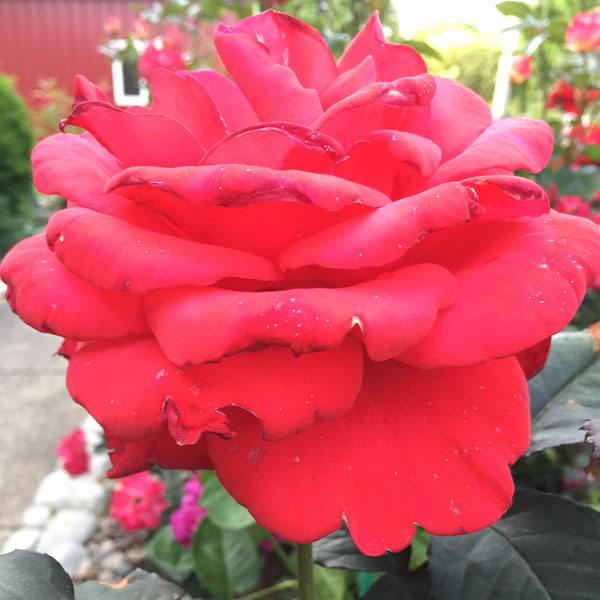
Hot Weather Increases Carotenoids I remember the most basic things my mother taught me about growing tomatoes: you have to have heat and sun to have a bountiful crop, and the fact that tomatoes are high in carotenoids is why.
With all pigments, the more pigment the flower produces in the bud, the brighter its colors will be. With carotenoids, a little bit of pigment makes a soft yellow flower. As the pigment levels increase, flowers become increasingly vivid yellows, oranges, and reds. This is the progression that a tomato follows as it ripens, gradually increasing production of carotenoids until it is fully ripe and red.
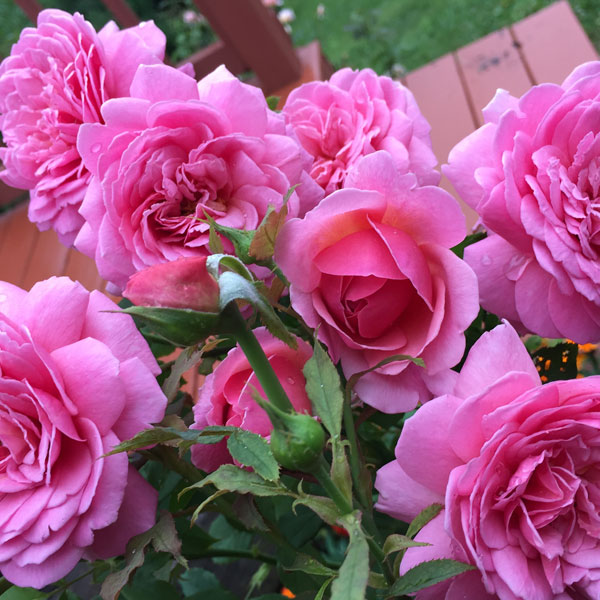
Anthocyanins
The Blues Purples Pinks Reds  Anthocyanins are Unstable
Fall leaves change color in response to weather and this is an indicator of anthocyanin pigments. Anthocyanins are best known as the red pigment in fall leaves.
Did you notice how as the weather cools the red roses turn redder?
Colors fade almost completely as Anthocyanins & Flavanols burn away.
Anthocyanins are are much less stable than carotenoids.
Red Roses Turn Redder as The weather Cools Because
Anthocyanins Increase and Turn Red in Response to Cold

Nature does do some things that alter ph and other anthocyanin characteristics of plants. Functioning almost as a sort of anti-freeze in plant sap anthocyanins respond to dropping temperatures and produce more anthocyanins and become redder. For some reason, redder anthocyanins seem to have a more protective anti-freeze effect in plants. This happens in maple leaves.
maximize anothocyanins, to turn leaves their brightest reds and oranges, and to increase and darken the reds and pinks Maximum Anothocyanin Formula for Fall Color
The perfect weather is a factor for beautiful fall colors.
Bright sunny days
Less rain
Cold
Anthocyanins Degrade and Disappear with HeatÂ
Flowers that fade quickly in summer heat are high in bands of anthocyanin pigments. These flowers tend to intensify and are more beautiful in cooler weather since some anthocyanins are very sensitive to heat.
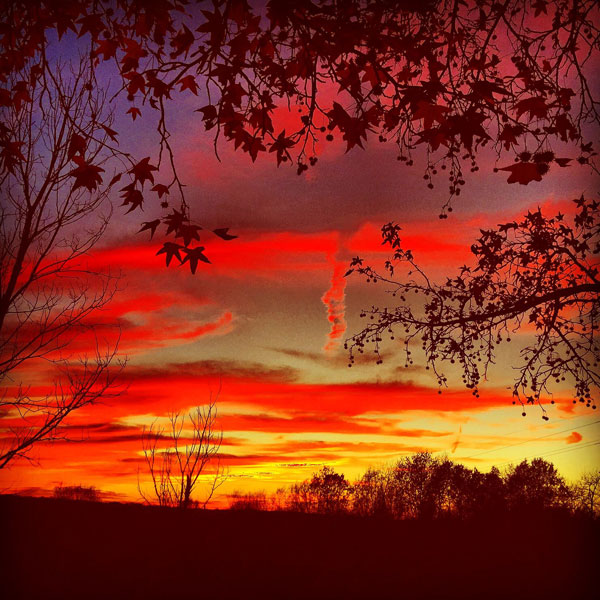
Source American Scientific *Carotene pigments (which are carotenoids) produce yellow, orange and red colors whereas anthocyanin pigments (which are flavonoids) produce red, purple, magenta and blue colors. Most red flowers use anthocyanin pigments to produce their red coloring (although some use carotenoids). On the paper strips, the anthocyanin pigments may have appeared as a purplish-reddish band. If different red flowers made similarly colored bands around the same height on the paper towel strip as one another, then they likely have the same pigment. If the bands are different colors and/or at different heights, however, then they’re probably different pigments. Carotene pigments are more commonly found in vegetables, and, in fact, they are what make carrots look orange. Yellow and orange flowers can have carotenoids or flavonoids, and blue flowers often have anthocyanin pigments that are modified. Some flowers even have chlorophyll that gives them green coloring.